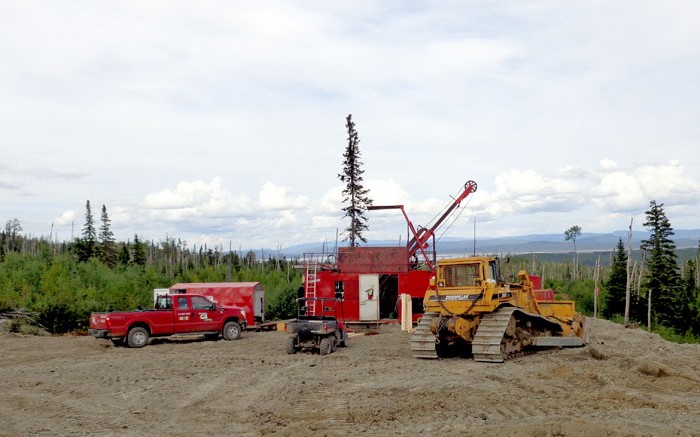VANCOUVER — For just $90 million, Mason Graphite (LLG-V) could transform its Lac Guéret project in Quebec’s North Shore into a mine producing 50,000 tonnes of graphite concentrate annually for $390 per tonne, a cost that compares nicely to an expected average sales price of $1,525 per tonne.
Covering 116 sq. km, the Lac Guéret project is 300 km north of the town of Baie-Comeau. A highway passes within 80 km of the project, which can be accessed through logging roads. Mason says power for a mine at the site would come from diesel generators.
Mason completed an initial resource estimate for Lac Guéret in mid-2012, based on the previous owner’s drill results, and advanced the project directly into a preliminary economic assessment (PEA). That study is now complete, and it paints a rosy picture of the project’s potential — and that’s before Mason updates the Lac Guéret resource estimate with its own 26,500 metres of drilling.
The initial estimate pegged Lac Guéret’s resources at 7.59 million measured and indicated tonnes grading 20.4% carbon as graphite, plus 2.76 million inferred tonnes averaging 17.29% carbon as graphite. Mason based the project’s PEA on this resource, even though it covers less than 20% of the main GC zone as defined by surface mapping.
In its subsequent 163-hole drill program, the company focused on expanding the GC deposit and drills, returning intervals of similar size and grade to the known resource. Mason also drilled 18 holes into the smaller GR zone, which lies to the north.
The company is working to update the project-resource estimate. In the meantime, the initial resource was enough to generate a solid PEA.
The study assessed an open-pit mine with graphite recovered via grinding and flotation. Such a process produces graphite flakes of varying size, while larger flakes fetch a higher price. Of the 50,000 tonnes of saleable graphite expected annually from the mine, slightly more than half are made up of the smallest category of flakes — which pass through a 150 mesh screen and are worth roughly $1,200 per tonne, based on 24-month trailing prices.
The other 22,500 tonnes fall into three size categories. The largest flakes are caught by a 50 mesh screen and are worth $2,200 per tonne. The next class will not pass through an 80 mesh screen and are valued at $2,000 per tonne. The third grouping comprises flakes caught by a 150 mesh screen, which are worth $1,500 per tonne.
For the PEA, Mason calculated the volume-weighted average value of the product expected from Lac Guéret — which came in at $1,974 — and cut the price to a more conservative $1,525 per tonne. This price gave Lac Guéret a pre-tax net present value (NPV) of $364 million at an 8% discount rate, and predicted the mine would generate a 33.7% pre-tax internal rate of return (IRR).
The return would pay back the $89.9 million capital cost in 2.5 years.
The less conservative average price of $1,974 per tonne boosts the pre-tax NPV to $558 million and the pre-tax IRR to 44.7%.
Mason has been advancing Lac Guéret since acquiring the project a year ago from Cliffs Natural Resources (CLF-N). The project ended up in Cliffs’ portfolio when the major bought Consolidated Thompson Iron Mines in 2011. For 100% ownership of Lac Guéret, Mason paid Cliffs $7.5 million and 2 million warrants, exercisable at 75¢ for two years on signing. The deal also requires Mason to pay Cliffs $2.5 million on the completion of a feasibility study, and $5 million when commercial production starts.
News of the Lac Guéret PEA added 5¢ to Mason’s share price, bringing it to 60¢. The company has a 52-week trading range of 20¢ to 95¢, with 57 million shares outstanding.


Be the first to comment on "PEA shows Lac Guret has graphite potential"